
PUMPA - SMART LEARNING
எங்கள் ஆசிரியர்களுடன் 1-ஆன்-1 ஆலோசனை நேரத்தைப் பெறுங்கள். டாப்பர் ஆவதற்கு நாங்கள் பயிற்சி அளிப்போம்
Book Free DemoElectric current is the flow of electric charges (electrons) in an electric circuit. Electricity occurs from the movement of electric charge.

Flow of charges and current
Electricity is mainly generated from power stations. We use electricity to light our homes, roads, markets, and factories to make our work easier after sunset. It also helps to lift water from wells to the tank at the rooftop with the help of pumps.

Power station
A simple electric circuit:
An electric circuit is the continuous closed path along which current flows from the positive terminal to the negative terminal of the battery.
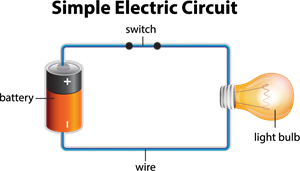
An electric circuit
Construction of a circuit: An electric circuit consists of a cell or a battery, connecting wires, a bulb, and a switch.
Electric cell:
An 'electric cell' is a device that converts chemical energy into electrical energy, thus producing a small amount of electricity. A cell is a single unit.
Example:
Alarm clocks, wristwatches, transistor radios, and cameras.
Construction of a cell:
The cell consists of two terminals; a small metal cap on one side with a positive (+) sign and a metal disc on the other side with a negative (–) sign. The positive and the negative terminal are connected for the current to flow.

A cell
Battery:
A battery is a collection of two or more cells. It is the main source of electric current.
Example:
Torches, transistors, toys, and remote controls.
A battery can be made by connecting the positive terminal of a cell to the negative terminal of another cell. It is not necessary to place the electric cells one after another. It can be placed next to each other.

A battery
Symbol for cell and battery:
The positive terminal is represented by a longer line, and the negative terminal is represented by a shorter line.
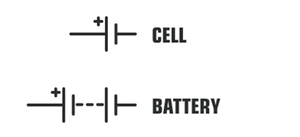
Schematic representation of cell and battery
Cell holder:
The cells connected together by a thick wire or a metal strip is used inside the battery compartment. The positive terminal of a cell is connected to the negative terminal of another cell with the help of metal strips. (+) and (–) signs are given at the ends of the battery for convenience (to place the cells).
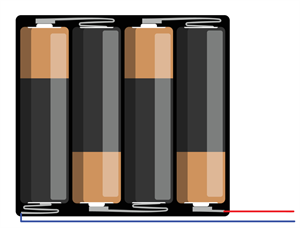
A cell holder
Construction of a cell holder:
We can make our own cell holder even though it is available in markets. A cell holder can be constructed using a wooden block, two iron strips and a rubber band which helps to hold the strips tightly. The cells are placed in such a way that the positive terminal of a cell is connected to the negative terminal of another cell. A piece of wire is connected to the metal strips on the cell holder.
Switch:
An electric switch or a key is connected to the circuit to stop or allow the flow of current.
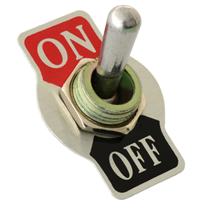
A switch
If a key is in open condition (switched off state), then the current will not flow across the circuit; thus, it is an open circuit. The bulb does not glow in this type.
If the key is in closed (switched on) condition, then current will flow, making it a closed circuit. The bulb glows in this type.
If the key is in closed (switched on) condition, then current will flow, making it a closed circuit. The bulb glows in this type.
The symbol for the switch is shown below:
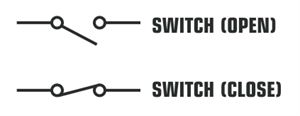
Schematic representation of a switch
Wire:
The connecting wires are used for carrying current across the circuit, and a bulb (or a lamp).
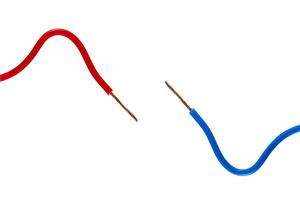
Connecting wires
The symbol for the wire is a single straight line.

Schematic representation of a wire
Bulb or lamp:
The two terminals of the electric cell connected to the bulb can form a simple electric circuit. This provides a complete path for current to flow between the two terminals of the electric cell.
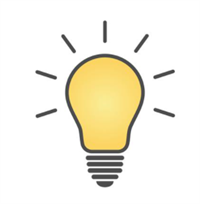
A bulb
The symbol for the bulb is given below.

Schematic representation of a bulb